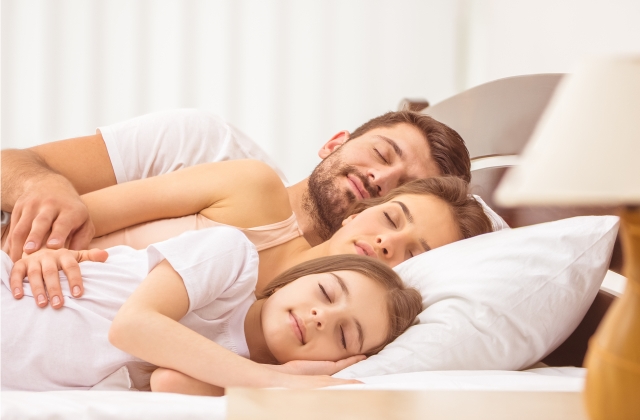
Centers of Excellence

Sleep Apnea-Hypopnea Syndrome is a condition characterized by an abnormal breathing during sleep.
The Pediatric Sleep Disorders Department aims in the exact diagnosis and in-time treatment of adults and children’s sleep disorders. The Department is equipped with a state-of-the-art Multiple Sleep Latency Test (MSLT) machine that is able to explore all sleep disorders (snoring, sleep apnea syndrome, sleep disorders of children with cardiac inefficiency, etc.) through MSL Testing. The Department is equipped with a state-of-the-art Multiple Sleep Latency Test (MSLT) machine that is able to explore all sleep disorders (snoring, sleep apnea syndrome, sleep disorders of children with cardiac inefficiency, etc.) through MSL Testing.
MSLT is a simple and painless method: the child sleeps in the hospital overnight – escorted by its mother of course – while the equipment records several parameters. The processing of these measurements proves the existence of a possible sleep disorder.
What is Sleep Apnea-Hypopnea Syndrome?
Sleep Apnea-Hypopnea Syndrome is a condition characterized by an abnormal breathing during sleep. During sleep, breathing is often interrupted by repeated apneas, leading to sleep fragmentation. The subsequent loss of sleep continuity due to frequent apneas causes the symptoms described by patients and detailed below. Sleep apneas are usually caused by obstruction of the upper respiratory system (posterior pharynx area), in which case they are called obstructive apnea. In rarer occasions, they may be caused by an imbalance in the brain center that regulates respiration; this is known as central apnea.
What causes Sleep Apnea-Hypopnea Syndrome?
Common risk factors of obstructive apnea are obesity, short neck, enlarged tonsils or adenoids, prominent soft palate, large uvula, etc.
What are the symptoms Sleep Apnea-Hypopnea Syndrome?
Patients with sleep apnea may develop symptoms both while sleeping and when awake.
In most patients, sleep apnea is characterized by intense and loud snoring, followed by repeated apneas and hypopneas (overly shallow breathing) that wake them up and disturb their sleep. During the apneas and hypopneas, the snoring stops and starts again when the patient resumes breathing.
In any event, breathing while sleeping is laborious and the patient wakes up with an intense feeling of choking. However, patients do not remember these symptoms on the following day and complain that they suffer from morning headaches, they have not slept well, their sleep was not refreshing and they would want to sleep more.
The most common symptoms include:
Many of these symptoms are confirmed by the spouses or the family.
What are the consequences of Sleep Apnea-Hypopnea Syndrome?
Breathing disorders prevent the supply of oxygen to vital organs, leading to the development of more serious diseases. The most common are arterial hypertension, cardiac arrhythmias and diabetes mellitus.
The Sleep Apnea-Hypopnea Syndrome causes daytime sleepiness and fatigue, low sex drive, a reduction in higher brain functions, such as memory, judgment and concentration etc. The consequences on the quality of life, as well as the professional and social life of a patient are dramatic.
Lastly, the lack of normal sleep causes decreased reflexes and extreme sleepiness, increasing the risk of fatal road traffic accidents or occupational accidents.
How is Sleep Apnea-Hypopnea Syndrome diagnosed?
Sleep apnea can only be diagnosed in special Sleep Study centers, using polysomnography. It is an entirely painless, non-invasive method, which simultaneously records several function parameters during sleep, such as:
How is Sleep Apnea-Hypopnea Syndrome treated?
Correction of pre-existing factors, such as obesity, may treat or improve the Syndrome in some patients. The use of an auto-CPAP device (Continuous Positive Airway Pressure) delivers air pressure to the patient via a mask and is the most common type of treatment.
Each patient is evaluated by a pulmonology specialist based on clinical evidence and lab results (i.e. with a polysomnogram). The specialist will decide on the appropriate treatment option for each patient.